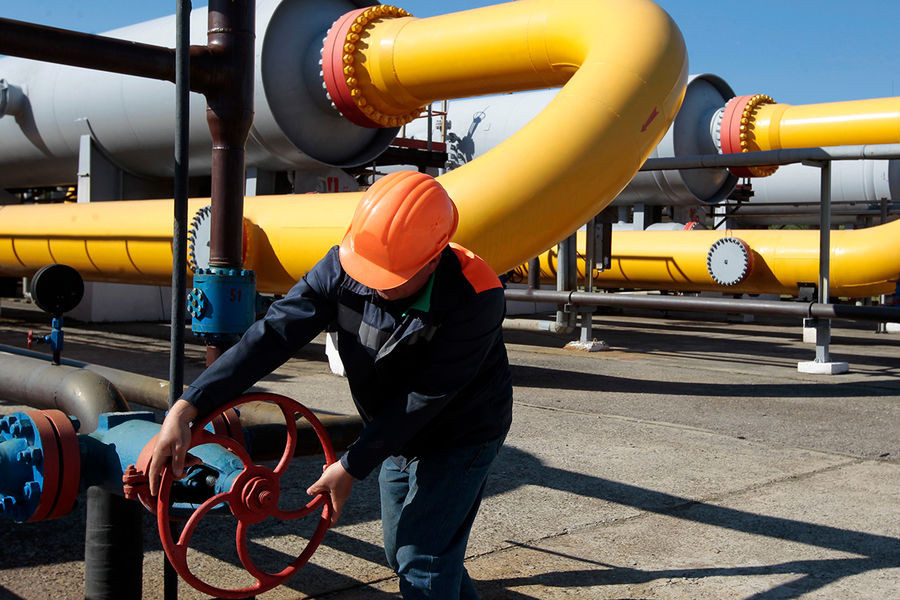
The price of gas in Europe is declining on Wednesday. May futures on the index of the largest European hub TTF at morning trading were at $1,160.9 per 1 thousand cubic meters. The reason for the decline was the weather forecast and stable current supplies of liquefied natural gas, as well as pipeline gas. It is noteworthy that Gazprom continues to load the Ukrainian GTS at the highest level of a long-term contract, that is, at the level of 109 million cubic meters per day.
The cost of gas in Europe against the background of the military conflict on the territory of Ukraine demonstrates strong volatility. After the introduction of sanctions by Western European countries against Russia, there was a serious threat of banning the export of energy resources from Russia, which is why the cost of this raw material shook the market with new records for four consecutive days. So, on March 7, futures contracts were trading at almost $3,900. Fortunately, in mid-March, gas prices in Europe went down, and already on the 21st, gas quotes dropped below $1,100. The spot price under the "one day ahead" contract was also characterized by strong jumps: on March 7 it peaked at $2,425, and on March 21 it dropped to $1,050.
It is worth noting that a noticeable increase in the cost of gas began in Europe last spring: then the average spot price according to the TTF hub index was trading in the range of $250-300 per 1 thousand cubic meters. In August last year, the value of the contract with the delivery "a day ahead" stunned the market with a rise above $600. In October, the quotes rose even higher – to $1,000.
There are more than enough reasons for such an increase in the cost of gas in Europe. Firstly, 2021 was characterized by strong demand for liquefied natural gas in Asian countries. At the same time, there was a very limited supply from the main suppliers of raw materials. Secondly, against this background, it was found that European underground storage facilities have a very low level of energy resource occupancy, which was the result of a long cold winter and an unusually hot summer for the euroregion in 2021. It should be noted that such persistently high gas prices have not been observed on the market in the entire history of the operation of gas hubs in Europe, that is, since 1996.
The military conflict in Eastern Europe repeatedly aggravates the situation in Western Europe regarding the provision of this region with natural gas, since the risks of limiting gas supplies from Russia are great. Despite the obvious problems in the energy sphere, the heads of the European Union decided to impose sanctions against Russia in the form of a gradual reduction in supplies from Russia. The replacement is planned to be carried out by importing liquefied gas from Qatar and the United States.
The EU has already announced a plan to switch to alternative energy sources. The political elite of the eurozone intends to gradually reduce purchases of Russian energy resources. How realistic the stated goals are can be judged by how dependent the Euroregion is on Russian supplies at the moment. So, the European Union, before the imposition of sanctions and all the loud statements, imported 90% of the gas it needed, 45% of this import belongs to Russia. In addition, Russia also supplies 25% of all imported oil and 45% of imported coal to Western Europe. By the way, Germany and Italy are the most dependent on Russia in this matter. As you can see, the share of Russian energy resources to ensure a comfortable life for Europeans is quite large.
In response to EU sanctions, Russian Leader Vladimir Putin announced that all unfriendly countries will pay for gas exclusively in Russian rubles from April 1. According to the new rule, the first payments in rubles should take place at the end of April or in May (depending on the contract). This requirement of the Kremlin reduces the risks of freezing and blocking the accounts of the Russian energy giant Gazprom in foreign banks in the event of the introduction of new restrictions. Today it became known that Russia is already ready to cut gas supplies to Denmark if their buyer Orsted AS does not make the next payment for it in rubles.
The determination of the Russian side is obvious, which is extremely disastrous for the European Union, which will need to take additional volumes of fuel somewhere to replenish gas storage facilities for next winter.
And some countries in Europe and Asia will probably fight for Russian liquefied natural gas, even despite its growing cost. According to analysts at The New York Times, competition for LNG will be extremely fierce over the next three years. The countries of Europe and Asia will compete for Russian energy resources to cover their needs.
In addition, there are a number of European countries that have already partially or completely abandoned Russian gas. For example, Italy, Austria and Lithuania. Lithuania, by the way, has completely abandoned gas from Russia, providing itself with natural gas at the expense of the LNG terminal in the port of Klaipeda.
 English
English 
 Русский
Русский Bahasa Indonesia
Bahasa Indonesia Bahasa Malay
Bahasa Malay ไทย
ไทย Español
Español Deutsch
Deutsch Български
Български Français
Français Tiếng Việt
Tiếng Việt 中文
中文 বাংলা
বাংলা हिन्दी
हिन्दी Čeština
Čeština Українська
Українська Română
Română

